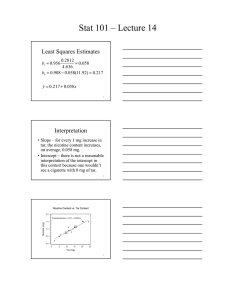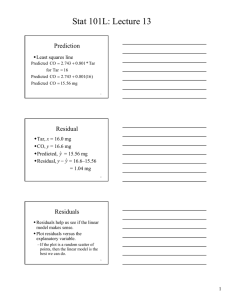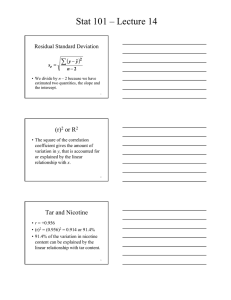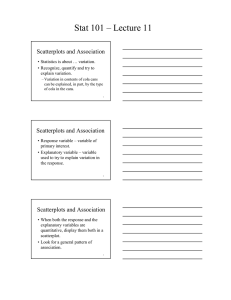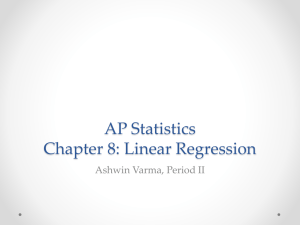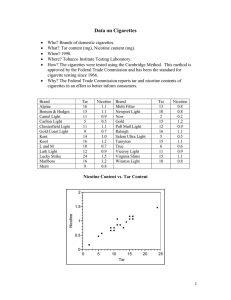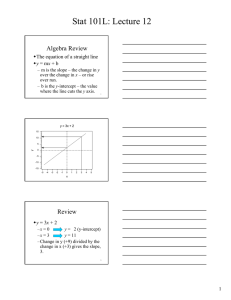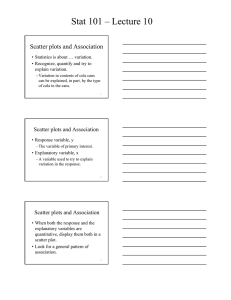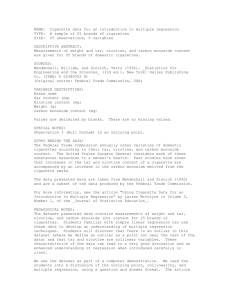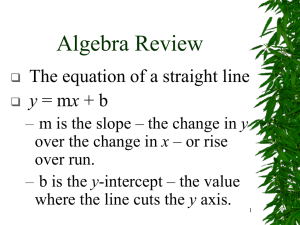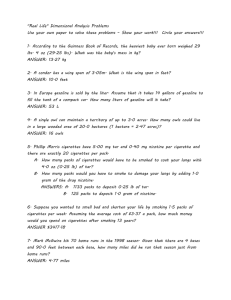Stat 101 – Lecture 13 Line of “Best Fit”
advertisement
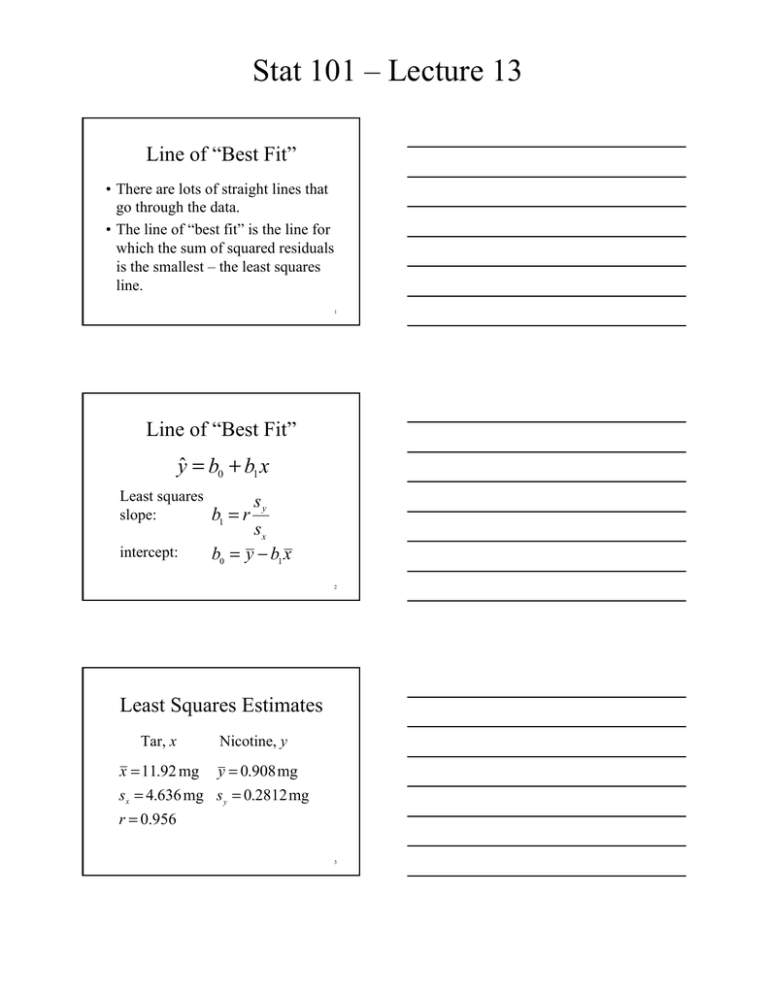
Stat 101 – Lecture 13 Line of “Best Fit” • There are lots of straight lines that go through the data. • The line of “best fit” is the line for which the sum of squared residuals is the smallest – the least squares line. 1 Line of “Best Fit” yˆ = b0 + b1 x Least squares slope: intercept: sy sx b0 = y − b1 x b1 = r 2 Least Squares Estimates Tar, x Nicotine, y x = 11.92 mg y = 0.908 mg sx = 4.636 mg s y = 0.2812 mg r = 0.956 3 Stat 101 – Lecture 13 Least Squares Estimates 0.2812 = 0.058 4.636 b0 = 0.908 − 0.058(11.92) = 0.217 b1 = 0.956 yˆ = 0.217 + 0.058 x 4 Interpretation • Estimated slope – for every 1 mg increase in tar, the nicotine content increases, on average, 0.058 mg. • The average change in nicotine for a 1 mg change in tar. 5 Interpretation • Estimated intercept – there is not a reasonable interpretation of the intercept in this context because one wouldn’t see a cigarette with 0 mg of tar. 6 Stat 101 – Lecture 13 Nicotine Content vs. Tar Content 2.0 Nicotine (mg) Predicted Nicotine = 0.217 + 0.058Tar 1.5 1.0 0.5 0.0 0 5 10 15 20 25 Tar (mg) 7 Prediction • Least squares line yˆ = 0 .217 + 0.058 x x = 13 yˆ = 0 .217 + 0.058 (13) = 0.97 8 Residual • • • • • Brand: Multi-Filter Tar, x = 13 mg Nicotine, y = 0.8 mg Predicted, ŷ = 0.97 mg Residual, y − yˆ = 0.8–0.97 = – 0.17 mg 9 Stat 101 – Lecture 13 Residuals • Residuals help us see if the linear model makes sense. • Plot residuals versus the explanatory variable. – If the plot is a random scatter of points, then the linear model is the best we can do. 10 Plot of Residuals vs. Tar Content 0.3 Residual 0.2 0.1 0.0 -0.1 -0.2 -0.3 0 5 10 15 20 25 Tar (mg) 11 Interpretation of the Plot • The residuals are scattered randomly. This indicates that the linear model is an appropriate model for the relationship between tar and nicotine content of cigarettes. 12
